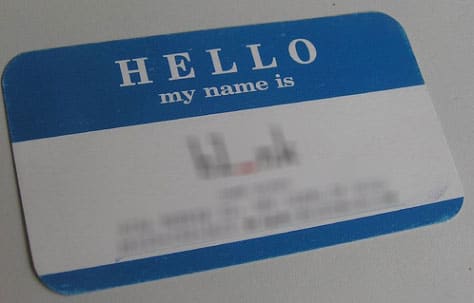
Creating a Great Business Card
Success is in the cards when you’ve got business cards that convey the right message.
A business card is an integral part of any good marketing plan. For its size and cost, it’s probably the most powerful part. Of course, you can’t expect your business card to tell the whole story about your company. What you should expect it to do is present a professional image people will remember. A business card can make or break a client’s first impression of your company. In fact, this little card makes as much of an impression as your personal appearance-the suit you wear or the briefcase you carry.
Choose a card style that’s appropriate for your business, industry and personal style. If you’re a funeral director, for example, you don’t want to be caught handing out day-glow cards with cartoon figures on them. If you’re a mechanic whose specialty is converting old Beetles into dune buggies, a formal, black-on-white engraved card will probably be dropped into the nearest circular file. When crafting a design, start with the style that best supports the business image you wish to project. To help you get started, here are five different card styles for you to consider:
- Basic cards. A basic card is usually printed in black ink on plain white or cream stock. This is a good style to choose when utility is all you need. It’s a no-nonsense approach that can appeal to clients and prospects who would not be impressed by fancy design features-the people who want “just the facts, ma’am.” The design is simple, and the information is clear and concise.
- Picture cards. Having your face on your card-whether it’s a photograph, a drawing or a caricature-helps a contact remember you the next time he or she sees you. Images representing a product or service, or a benefit your business provides, can help you communicate your business better than dozens of words. A splash of color (rather than just black and white) is often helpful on a picture card, too.
- Tactile cards. Some cards are distinguished not so much by how they look as by how they feel. They may use nonstandard materials, such as metal or wood, or have unusual shapes, edges, folds or embossing. Tactile cards tend to be considerably more expensive than regular cards because they use nonstandard production processes such as die cuts. But for some businesses, this more unusual card may be worth the price.
- Multipurpose cards. A card can do more than promote your name and business-it can also serve as a discount coupon, an appointment reminder or some other function. It may also provide valuable information that the average person may need. For example, a hotel may include a map on the back of its card for any guests who are walking around the local area. A card of any type can be made multipurpose by adding any of these types of features.
- Outside-the-box cards. A wildly original, fanciful or extravagant presentation can draw extra attention. Creativity knows no bounds-except the amount of money you wish to spend. Some examples are cards made of chocolate or that folded out into a miniature box to keep small items in.
Now It’s Time to Order
Once you’ve settled on a basic idea for your business card, it’s time to head to the printer. There are four primary considerations when ordering business cards:
- Weight. Most business cards are printed on 80-pound cover stock.
- Finish. Of the three available-smooth, linen and laid-the smooth finish is the most popular.
- Color. Right now, two-color cards predominate. If you’re selecting from a catalog, there are between five and 15 standard colors to choose from. If you have another ink color in mind, your printer can show you a Pantone Matching System book, which includes every shade under the sun.
- Quantity. It generally pays to print more cards rather than fewer, because the printer’s cost is primarily in the setup.
Design Resource
For more detailed descriptions of the different types of business cards, take a look at It’s in the Cards. In it, Ivan Misner, Candace Bailly and Dan Georgevich review more than 2,000 business cards from 10 countries and select more than 200 examples of some of the best, which are shown throughout the book in full-color.
One Final Tip
Though this may sound like obvious advice, it might cost you another trip to the printer if you don’t heed it: Include the essentials. This means your name, title, company name, address, phone number (or numbers, if you want to include your cell), e-mail and Web site. If someone wants to contact you after receiving your card, you sure as heck want them to be able to.
Source:
https://www.entrepreneur.com/article/71900
For more information, please visit our Frequently Asked Questions page for ordering translated business cards.
You can also use our express FREE Asian Business Card Translation Quote Request Form to select your options and receive a detailed quote for your exact order.
_________________________________________________
AsianBusinessCards.com
Japanese, Chinese & Korean Business Card Translation, Typesetting & Printing Experts



